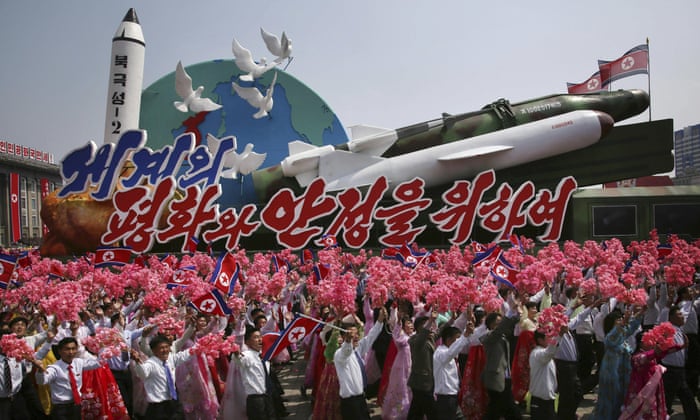 North Korea fires ballistic missile off its coast, Pentagon confirms
North Korea fires ballistic missile off its coast, Pentagon confirms
The missile was launched near Kusung and landed in the Sea of Japan. The type of missile is being assessed and the flight was not consistent with an intercontinental ballistic missile.
U.S. Pacific Command is fully committed to working closely with our Republic of Korea and Japanese allies to maintain security.
The North American Aerospace Defense Command (NORAD) determined the missile launch from North Korea did not pose a threat to North America.
South Korea’s Yonhap reported the missile traveled about 435 miles.
The launch is the first in two weeks since the last attempt to fire a missile ended in a failure just minutes into flight.
The isolated regime attempted but failed to test-launch ballistic missiles four consecutive times in the past two months but has conducted a variety of missile testing since the beginning of last year at fast pace.
Weapons experts and government officials believe the North has accomplished some technical progress with those tests.
U.S. President Donald Trump warned in an interview with Reuters in late April that a “major, major conflict” with the North was possible, but he would prefer a diplomatic outcome to the dispute over its nuclear and missile programs.
The launch is the first since a new liberal president took office in South Korea on Wednesday, saying dialog as well as pressure must be used to ease tensions on the Korean peninsula and stop the North’s weapons pursuit.
In a sign of Washington’s growing concern about the North, the CIA announced Wednesday its establishment of an integrated “Korea Mission Center.” It will be headed by a veteran operations officer to harness and direct the spy agency’s efforts in addressing the nuclear and ballistic missile threats.
The center will draw on officers from across the CIA and “bring their expertise and creativity to bear against the North Korea target,” an agency statement said.
U.S. Pacific Command is fully committed to working closely with our Republic of Korea and Japanese allies to maintain security.
The North American Aerospace Defense Command (NORAD) determined the missile launch from North Korea did not pose a threat to North America.
South Korea’s Yonhap reported the missile traveled about 435 miles.
The launch is the first in two weeks since the last attempt to fire a missile ended in a failure just minutes into flight.
The isolated regime attempted but failed to test-launch ballistic missiles four consecutive times in the past two months but has conducted a variety of missile testing since the beginning of last year at fast pace.
Weapons experts and government officials believe the North has accomplished some technical progress with those tests.
U.S. President Donald Trump warned in an interview with Reuters in late April that a “major, major conflict” with the North was possible, but he would prefer a diplomatic outcome to the dispute over its nuclear and missile programs.
The launch is the first since a new liberal president took office in South Korea on Wednesday, saying dialog as well as pressure must be used to ease tensions on the Korean peninsula and stop the North’s weapons pursuit.
In a sign of Washington’s growing concern about the North, the CIA announced Wednesday its establishment of an integrated “Korea Mission Center.” It will be headed by a veteran operations officer to harness and direct the spy agency’s efforts in addressing the nuclear and ballistic missile threats.
The center will draw on officers from across the CIA and “bring their expertise and creativity to bear against the North Korea target,” an agency statement said.